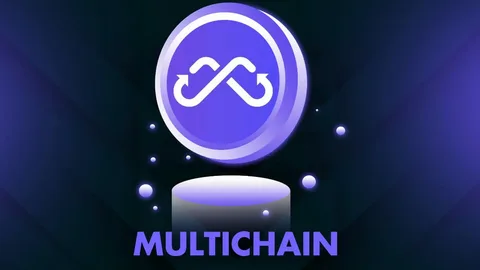Multichain Self-Custody: A Guide to Crypto Control

The cryptocurrency landscape is rapidly evolving, with new blockchains and decentralized applications (dApps) emerging constantly. This expanding ecosystem presents exciting opportunities and unique challenges for investors and users. One key concept gaining traction is multichain self-custody, a paradigm shift in how individuals manage their digital assets.
Understanding Multichain Self-Custody
At its core, self-custody refers to individuals directly controlling their cryptocurrency private keys. These keys are essentially passwords granting access to a user’s digital wallet and funds. Traditionally, self-custody has been associated with managing assets on a single blockchain. However, the rise of the multichain ecosystem has necessitated a more holistic approach.
Multichain self-custody involves managing cryptocurrency assets across multiple blockchains while maintaining direct control over the private keys. This approach empowers users to navigate the diverse landscape of blockchain technologies and leverage the unique advantages of different networks.
The Rise of the Multichain Ecosystem
Several factors drive the increasing popularity of the multichain ecosystem:
- Interoperability: The ability to seamlessly transfer value and data between different blockchains is crucial for the widespread adoption of cryptocurrency. Multichain protocols and bridges facilitate this interoperability, enabling users to access a wider range of apps and services.
- Scalability and Efficiency: Different blockchains offer varying scalability and transaction speeds. Users can optimize their transactions by utilizing multiple chains based on specific needs, such as fast and cheap transfers or complex smart contract interactions.
- Innovation and Specialization: The multichain environment fosters innovation, as developers can specialize in building applications on specific blockchains best suited for their use cases. This specialization leads to a more diverse and robust ecosystem.
Benefits of Multichain Self-Custody
Multichain self-custody offers several key advantages:
- Enhanced Control and Security: Users have ultimate authority over their funds by maintaining direct control over their private keys. This eliminates the counterparty risk associated with centralized exchanges or custodial services, where funds may be vulnerable to hacks, scams, or regulatory interventions.
- Increased Flexibility and Diversification: Access to multiple blockchains allows users to diversify their portfolios across different assets and protocols. This can mitigate risks associated with investing in a single blockchain or project.
- Early Access to Emerging Technologies: Self-custody provides early access to cutting-edge technologies and dApps on emerging blockchains. This can offer significant advantages for early adopters and investors.
- Cost-Effectiveness: By interacting with different blockchains directly, users can often avoid the fees associated with centralized exchanges or third-party services.
Challenges and Considerations
While multichain self-custody offers numerous benefits, it also presents certain challenges:
- Complexity: Managing multiple wallets and private keys across blockchains can be complex, especially for novice users.
- Security Risks: The responsibility for securing private keys falls entirely on the user. The associated funds may be irretrievably lost if keys are lost or compromised.
- User Experience: The user experience of interacting with multiple blockchains can be fragmented and inconsistent. However, advancements in multichain wallets and user interfaces are gradually addressing this issue.
Tools and Technologies for Multichain Self-Custody
Several tools and technologies are emerging to facilitate multichain self-custody:
- Multichain Wallets: These wallets support multiple blockchains and provide a unified interface for managing assets across different networks. Examples include MetaMask, Phantom, and Kepler.
- Bridge Protocols: These protocols enable the transfer of assets between different blockchains, facilitating seamless interaction within the multichain ecosystem. Popular bridge protocols include Wormhole, Synapse, and Multichain.
- Decentralized Exchanges (DEXs): DEXs allow users to swap tokens across different blockchains without relying on centralized intermediaries. Popular DEXs include Uniswap, Curve, and PancakeSwap.
The Future of Multichain Self-Custody
Multichain self-custody has a promising future. As the blockchain ecosystem evolves, we expect further advancements in tools, technologies, and user experiences. This will make it easier for individuals to manage their digital assets across multiple chains while maintaining control and security.
Multichain self-custody represents a significant step towards a more decentralized and user-centric future for cryptocurrency. By embracing this paradigm, individuals can take control of their digital assets and participate more fully in the burgeoning multichain ecosystem.




